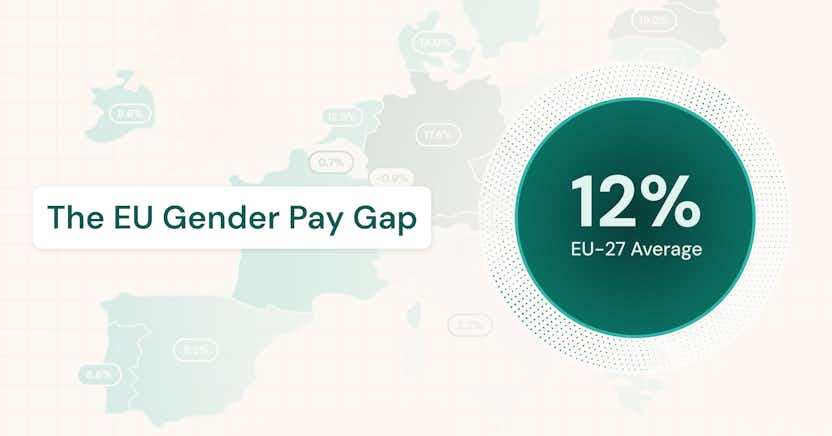How to Drive Business Results through Transparent Compensation

Learn more about the following beqom products
For organizations competing to hire and retain top performers, pay transparency is no longer a nice-to-have—it’s a competitive advantage. As expectations shift around pay equity and open communication, leading employers are rethinking how they define, manage, and communicate compensation. The result: higher levels of employee trust, better alignment with company values, and measurable improvements in performance and retention.
While growing regulatory requirements have accelerated the move toward pay transparency in many jurisdictions, the most forward-thinking companies are going beyond compliance. They see pay transparency as a strategic opportunity—one that builds credibility with employees and reinforces a culture of fairness.
Pay transparency isn’t just about publishing salary bands. It’s about giving employees a clear understanding of how pay decisions are made—and ensuring those decisions are consistent, equitable, and explainable. When done well, it sends a powerful message: your organization is serious about fairness, accountability, and rewarding impact.
Why pay transparency matters for business performance
How transparent compensation drives business performanceThe value of pay transparency goes far beyond employee sentiment. For HR and compensation leaders, it offers a clear business case—one rooted in data, operational effectiveness, and competitive positioning.
Here’s how transparent compensation practices contribute directly to organizational performance:
1. Stronger employee engagement and trust
When employees understand how their compensation is determined, it builds confidence in leadership and reinforces a sense of fairness. Transparency helps demystify pay decisions, reducing speculation and fostering open dialogue between employees and managers.
- Employees who perceive fairness in pay are more likely to be engaged and motivated.
- Trust in pay practices reduces turnover risk, especially among high performers.
2. Improved talent attraction and retention
Candidates increasingly expect clarity on compensation during the hiring process. Pay transparency helps organizations compete for top talent by:
- Setting realistic expectations early in the recruiting cycle.
- Demonstrating a commitment to equity and accountability.
- Differentiating the employer brand in crowded talent markets.
Retention also benefits. Employees who know where they stand—and see a clear path to progress—are less likely to leave in search of answers elsewhere.
3. Increased equity and reduced bias
Transparent compensation frameworks encourage more structured and consistent decision-making. They help uncover and address systemic pay gaps by:
- Standardizing how compensation decisions are made across departments.
- Identifying disparities that may be hidden in opaque pay structures.
- Supporting DEI goals by ensuring that equity is measured and monitored.
4. Better alignment between compensation and performance
Pay transparency requires organizations to clearly define and communicate how performance influences pay. This strengthens alignment by:
- Linking rewards to impact and contribution.
- Encouraging goal-setting and ongoing performance discussions.
- Making it easier to justify and explain pay outcomes.
In short, pay transparency helps HR leaders do more than meet expectations—it enables them to drive measurable impact across engagement, equity, and performance. But realizing these benefits takes more than just publishing salary data. It requires strategy, structure, and the right technology.
What does it take to implement pay transparency effectively?
Achieving meaningful pay transparency is not about disclosing everything overnight. It’s a phased, strategic effort that requires a clear plan, organizational alignment, and the right infrastructure to support consistency and fairness.
Here are the key elements required to make pay transparency a reality:
1. Defined compensation philosophy
A well-articulated compensation philosophy is the foundation for pay transparency. It clarifies your company’s approach to pay—including how you balance internal equity, market competitiveness, and performance.
- Serves as a guide for decision-making and communication.
- Helps employees understand what the organization values and rewards.
2. Structured pay frameworks
Pay structures like salary bands or job grades create a consistent foundation for managing compensation and are a essential foundation for pay transparency. They ensure that delivering pay transparency doesn’t lead to confusion or subjectivity.
- Makes it easier to explain pay levels and progression paths.
- Enables equitable comparisons across roles and departments.
3. Clear communication strategy
Employees don’t just want data—they want context. A pay communication plan helps HR leaders explain how pay is determined and why decisions are made the way they are.
- Empowers managers to have more effective compensation conversations.
- Builds employee confidence in the fairness and logic of the system.
4. Leadership buy-in and alignment
Transparency initiatives require sponsorship at the top. HR leaders must work closely with executives to align on goals, messaging, and risk tolerance.
- Ensures consistency across business units and geographies.
- Reinforces that pay practices are part of broader company values.
5. Technology that enables visibility and control
Modern compensation platforms are essential for managing the complexity of transparent pay practices at scale. They help operationalize your policies, enforce consistency, and surface the right information to the right stakeholders.
- Automates calculations, approvals, and reporting.
- Provides employees and managers with insights into pay decisions.
When these elements are in place, pay transparency becomes more than a compliance checkbox—it becomes a strategic asset. And it positions HR to lead the conversation around fairness, performance, and value.
How to get started with your transparency strategy
Moving toward greater pay transparency doesn't mean flipping a switch. It's a journey that requires thoughtful planning, cross-functional collaboration, and a phased rollout. Here’s how to approach it:
1. Assess your current state
Begin by understanding where your organization stands today. What information about compensation is currently shared with employees? Are there inconsistencies across teams or geographies? Are there gaps between your pay practices and your values?
- Conduct an internal audit of pay structures, policies, and communication practices. This may include a pay equity analysis.
- Evaluate your compliance with legal requirements around pay.
- Identify any potential equity issues or areas where transparency could add value.
2. Define your transparency goals
Decide how far you want to go with transparency—and why. Your goals might include improving employee trust, supporting DEI initiatives, aligning with legal requirements, or strengthening your employer brand.
- Determine what the applicable regulations require.
- Decide what information will be shared (for example salary bands or bonus criteria).
- Set a timeline and define what success looks like.
3. Engage your stakeholders
Transparency affects employees, managers, recruiters, executives, and HR teams. Getting alignment across these groups early helps reduce resistance and ensures smoother implementation.
- Bring key stakeholders into the planning process.
- Provide context for why transparency matters and how it supports business objectives.
4. Develop your communication plan
Even the best pay practices can fall flat without effective communication. Your plan should outline how you’ll share information with different audiences—and how you’ll support managers in having pay conversations.
- Use consistent messaging and clear, accessible language.
- Provide training for managers to help them explain pay decisions with confidence.
5. Choose the right technology
Managing compensation transparency at scale requires tools that can deliver visibility, consistency, and control. This includes systems that integrate compensation data, provide analytics, and ensure compliance with internal policies and external regulations.
- Look for platforms that support flexible frameworks and localized requirements.
- Enable self-service access to relevant information for HR, managers, and employees.
Starting small and building over time is often the most effective path. A pilot with a specific region, business unit, or role group can provide valuable insights before a broader rollout. The key is to move forward with intention, clarity, and a commitment to fairness.
How beqom supports pay transparency initiatives
Implementing pay transparency at scale requires more than good intentions—it requires the right infrastructure. beqom’s compensation management platform is purpose-built to help organizations operationalize pay transparency in a way that is consistent, secure, and aligned with business goals.
With beqom, HR leaders can:
- Design and manage structured compensation frameworks with configurable salary ranges, job architectures, and performance-linked pay.
- Provide stakeholders with tailored visibility into pay decisions, from recruiters and managers to executives and employees.
- Monitor and report on pay equity across regions, departments, and roles using built-in analytics and audit tools.
- Automate complex compensation cycles while maintaining full control over policy enforcement and data integrity.
Whether you're just beginning your transparency journey or scaling an existing strategy globally, beqom gives you the tools to support transparency while protecting data privacy and ensuring fairness.
See how beqom can help you build a transparent, equitable compensation strategy.
Book a demo







